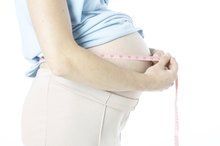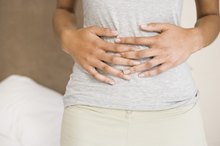Uterine Polyps and a Healthy Diet
The uterus includes the cervix, the passageway connected to the vagina, and the corpus, which carries a growing fetus during pregnancy. Within these structures are smaller layers like the endometrium, the innermost lining of the uterus. Abnormal cell growths can occur in any part of the uterus but it is the endometrium that is most commonly impacted by polyp formation and, in some cases, malignant cells. Maintaining your reproductive tract involves a well-balanced and nutritious diet along with healthy lifestyle habits.
If you are experiencing serious medical symptoms, seek emergency treatment immediately.
Polyps, Fibroids and Cancer
Abnormal spikes in estrogen especially during the reproductive years is linked to abnormal cell cluster development. However, the exact cause of polyp or fibroid formation is not fully understood. Polyps, which are growths attached to the endometrium, the inner wall of the uterus, may protrude into the uterine corpus. They are generally small noncancerous clumps of uterine tissue whereas fibroids are composed of muscle tissue. The symptoms of polyps and fibroids are similar and may include abnormal bleeding, pelvic pain and in some cases difficulty with getting pregnant. Diagnostic testing can reveal the exact condition and the presence or absence of cancerous cells. Endometrial cancer is the most common form of reproductive cancer in females however, early detection and removal of polyps can help reduce your risk of cancer progression.
- Abnormal spikes in estrogen especially during the reproductive years is linked to abnormal cell cluster development.
- The symptoms of polyps and fibroids are similar and may include abnormal bleeding, pelvic pain and in some cases difficulty with getting pregnant.
Diet and Reproductive Health
What Are the Causes of an Enlarged Uterus?
Learn More
According to Johns Hopkins Medicine, the cause of polyp formation is unknown and you may not be able to prevent the condition. However, you can take precautionary measures with your reproductive health by eating a well-balanced diet based on your nutritional needs as a woman and getting regular gynecological check-ups. During the reproductive years, you need plenty of daily calcium for strong bone development, iron to maintain blood health since you lose this mineral during menstruation, and adequate calorie intake from healthy foods to maintain a nourishing fetal environment in the event of pregnancy.
- According to Johns Hopkins Medicine, the cause of polyp formation is unknown and you may not be able to prevent the condition.
- However, you can take precautionary measures with your reproductive health by eating a well-balanced diet based on your nutritional needs as a woman and getting regular gynecological check-ups.
Whole Grains, Vegetables and Fruit
A healthy, well-balanced diet includes a variety of fresh fruits, vegetables and whole grains, ideally with a serving of each in every meal. The average women needs 1,700 to 2,000 calories per day to sustain a healthy weight and level of energy. Fruit as a snack in between meals and as dessert helps you sustain daily caloric needs but also provides you a source of fiber for digestive regularity. Raw vegetables are also healthy snack foods and make tasty side dishes during your main meals. Whole grains like wheat bread or pasta, bran cereal and brown rice promote energy from calories and are not full of added sodium and sugars like refined white grains.
- A healthy, well-balanced diet includes a variety of fresh fruits, vegetables and whole grains, ideally with a serving of each in every meal.
- Fruit as a snack in between meals and as dessert helps you sustain daily caloric needs but also provides you a source of fiber for digestive regularity.
Lean Meat and Dairy
Signs of Fibroid Shrinkage
Learn More
Saturated fats found in red meat, whole dairy, fried foods and processed foods are not optimal in a healthy diet. Limit daily saturated fat intake to no more than 10 percent of your total daily calories and replace these fatty foods with leaner sources. Baked chicken, grilled fish and low-fat dairy supply you with nutrients and fewer unhealthy fats that can increase your risk of health complications. Obesity is a risk factor for developing endometrial problems, notes HealthyWomen.org 4. Reduce your unhealthy fat intake to help lower your risk of reproductive system problems.
- Saturated fats found in red meat, whole dairy, fried foods and processed foods are not optimal in a healthy diet.
- Baked chicken, grilled fish and low-fat dairy supply you with nutrients and fewer unhealthy fats that can increase your risk of health complications.
Related Articles
References
- Center for Uterine Fibroids; About Fibroids; Brigham and Women's Hospital; 2006
- Palo Alto Medical Foundation: Female Diet and Nutrition
- Illinois Department of Public Health: Facts About Women's Wellness-Nutrition
- HealthyWomen.org: Uterine Cancer
- UT Southwestern Medical Center. What’s going on with my uterus? 3 conditions related to pelvic pain and bleeding. Updated September 27, 2018.
- Gossman W, Fagan SE, Sosa-Stanley JN, et al. Anatomy, abdomen and pelvis, uterus. In: StatPearls. Updated July 11, 2019.
- Penn State Hershey. Milton S. Hershey Medical Center. Menstrual disorders. Updated September 29, 2017.
- Sharghi M, Mansurkhani SM, Ashtary-Larky D, et al. An update and systematic review on the treatment of primary dysmenorrhea. JBRA Assist Reprod. 2019;23(1): 51–57. doi:10.5935/1518-0557.20180083
- Cleveland Clinic. Menorrhagia (heavy menstrual bleeding). Updated March 8, 2018.
- Chung S, Kim WB. Various approaches and treatments for pelvic organ prolapse in women. J Menopausal Med. 2018;24(3):155-. doi:10.6118/jmm.2018.24.3.155
- UNC Department of Obstetrics & Gynecology. Pelvic relaxation and retroverted uterus.
- Saravelos SH, Cocksedge KA, Li T. The pattern of pregnancy loss in women with congenital uterine anomalies and recurrent miscarriage. Reproductive BioMedicine Online. 2010;20(3):416-422. doi:10.1016/j.rbmo.2009.11.021
- Colombia University Irving Medical Center. Uterine anomaly.
- Centers for Disease Control and Prevention. Pelvic inflammatory disease (PID) — CDC factsheet. Updated December 11, 2015.
- Cleveland Clinic. Uterine polyps. Updated September 28, 2018.
- UCLA Health. What are fibroids.
- Cleveland Clinic. Atypical endometrial hyperplasia. Updated June 25, 2017.
- NIH National Institute of Child Health and Human Development. What are the symptoms of endometriosis? Updated January 31, 2017.
- Cleveland Clinic. Asherman’s syndrome. Updated June 29, 2017.
- Centers for Disease Control and Prevention. Uterine cancer. What are the symptoms? Updated August 9, 2019.
- Speer LM, Mushkbar S, Erbele T. Chronic pelvic pain in women. American family physician. 2016;93(5):380-7.
- U.S. Department of Health & Human Services. Vaginal discharge.
- Centers for Disease Control and Prevention. Common reproductive health concerns for women. Updated April 27, 2018.
- Pinkerton JV, Guico-Pabia CJ, Taylor HS. Menstrual cycle-related exacerbation of disease. American Journal of Obstetrics and Gynecology. 2010;202(3):221-231. doi:10.1016/j.ajog.2009.07.061
- Planned Parenthood. What is a pelvic exam?
- Planned Parenthood. Pap smear test.
- MedlinePlus. Urinalysis.
- MedlinePlus. Hormone levels.
- Wong L, White N, Ramkrishna J, Júnior EA, Meagher S, Costa FDS. Three-dimensional imaging of the uterus: The value of the coronal plane. WJR. 2015;7(12):484-. doi:10.4329/wjr.v7.i12.484
- Acholonu UC, Silberzweig J, Stein DE, Keltz M. Hysterosalpingography versus sonohysterography for intrauterine abnormalities. JSLS. 2011;15(4):471-474. doi:10.4293/108680811X13176785203923
- NIH National Institute of Child Health and Human Development. What are the treatments for endometriosis? January 31, 2017.
- Harvard Medical School Harvard Health Publishing. Ask the doctor: Heavy bleeding, fibroids, and polyps. Updated May 14, 2019.
- Cleveland Clinic. Vaginal and uterine prolapse: Management and treatment. Updated November 30, 2015.
- Penn Medicine. Mullerian anomalies.
- Cleveland Clinic. Hysteroscopy. Updated July 18, 2018.
Writer Bio
Aubri John has been a contributing researcher and writer to online physical and mental health oriented journals since 2005. John publishes online health and fitness articles that coincide with her licensed clinical skills in addictions, psychology and medical care. She has a master's degree in clinical social work and a Ph.D. in health psychology.







